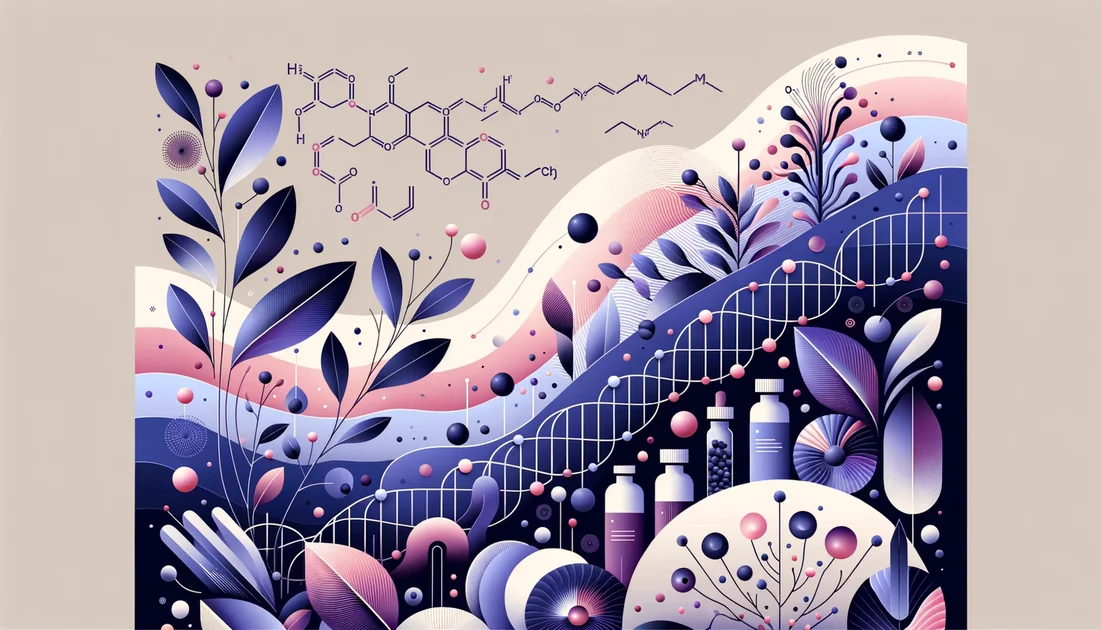
Clean Up, Power Up: How Mitopure Teaches Tired Mitochondria to Make Energy Again
You're halfway up the stairs when your legs file a quiet protest. Not pain—just a sense that the battery is running low. What if the answer isn't "more charge," but sending in a cleanup crew?
- Evidence
- Promising
- Immediate Effect
- No (it's not a stimulant; cellular changes are gradual) → 8–16 weeks
- Wears Off
- Gradually within weeks after stopping (human data limited)
The day your cells forgot to take out the trash
Your energy lives and dies with your mitochondria—the mini power plants in every cell. With age, their "quality control" slows, broken units linger, and the whole grid falters. Mitopure, a pure form of urolithin A (UA), doesn't act like a stimulant; it teaches cells to restart their cleanup protocol so the good mitochondria can carry the load. That cleanup process has a name—mitophagy—and it's the heart of this story. [1]
A detective story that began with pomegranates
Researchers noticed something curious: people who ate pomegranates and certain nuts didn't absorb a magic compound from the food itself. Instead, their gut microbes transformed food polyphenols into new molecules—urolithins. One of them, urolithin A, turned out to be a master switch for mitophagy. In 2016, a team at EPFL fed UA to aging roundworms; the worms lived about 50% longer and moved more like their youthful selves. In mice, endurance shot up, hinting that better mitochondrial housekeeping could translate into real-world vigor. [1] A few years later, the first human study confirmed UA was safe and that, over four weeks, it nudged muscle toward a more youthful gene program while shifting blood biomarkers tied to mitochondrial efficiency. Think of it as flipping the "maintenance mode" back on—subtle at first, but measurable. [2]
"Other than exercise, there are currently no effective solutions to treat age-related decline in muscle function," said Tufts' Roger Fielding, calling UA "a possible avenue" for improving muscle health. [3]
When food isn't enough: the microbiome catch
Here's the paradox: you can eat all the pomegranates you want and still make little to no UA if your microbiome lacks the right "workforce." In one crossover study of 100 healthy adults, only 12% had detectable UA at baseline; after a pomegranate-juice challenge, about 40% produced meaningful amounts. Direct UA supplementation, by contrast, delivered consistent, much higher levels across the whole group. [7] Scientists now classify people by urolithin "metabotypes"—A, B, and 0—based on what their microbes can make. In Western cohorts, non-producers can be common; in some data sets, low or non-producers together reached roughly 60%. The bottom line: relying on food alone leaves many adults without enough UA to flip the mitophagy switch. [8]
From lab bench to older legs: what trials show
In a University of Washington trial (66 adults, ages 65–90), 1,000 mg/day of UA for four months improved muscle endurance—more contractions until fatigue in both hand and leg muscles—while lowering blood markers linked to mitochondrial inefficiency and inflammation (acylcarnitines, ceramides, CRP). Whole-body tests like the 6-minute walk improved in both groups and didn't separate statistically, a reminder that rebuilding cellular infrastructure is gradual and that trials need time and power. [5] Lead investigator David Marcinek explained the logic simply: "Mitochondria are like batteries that power the cells in your body.. with aging, mitophagy becomes less efficient and your body accumulates this pool of failing mitochondria." The UA group showed metabolic shifts consistent with clearing that backlog. [4] In middle-aged adults (40–64) followed for four months, daily UA (500 or 1,000 mg) increased leg strength about 12% and nudged VO₂ and 6-minute walk distance upward, with parallel improvements in mitochondrial biomarkers and muscle proteins tied to mitophagy. Not every endpoint hit significance (peak power did not), but the pattern favored stronger, more efficient muscle over time. [6] If you're an already-trained athlete, temper expectations for quick performance gains: an eight-week trial in resistance-trained men didn't detect significant strength differences vs. placebo—another hint that UA's benefits accumulate with longer use and may matter most where mitochondria are under age-related strain. [12]
What it feels like when cells "clean house"
UA isn't a jolt; it's a remodel. Early human work shows shifts in gene expression and circulating metabolites within weeks, with functional endurance separation emerging by two months and strengthening at four. Subjectively, people describe steadier energy and easier repeat efforts—not a buzz, but less "battery sag" by afternoon. That's what you'd expect when the grid runs more efficiently. [2] [5] [6]
How to use it: slow burn, not a sprint
The clinical trials that showed benefits used 500–1,000 mg UA daily, taken consistently for 8–16 weeks. That's the window where mitophagy-first cleanup can translate into stronger, more enduring muscle. Quality matters: direct UA (like Mitopure) avoids the microbiome lottery, whereas pomegranate extracts vary and don't guarantee UA production. In fact, surveys have found many pomegranate supplements lack the characteristic tannin profile—even before the microbiome variability comes into play. [7] [9]
What we still don't know (and why curiosity is warranted)
A 2024 systematic review tallied five human studies: UA dose-dependently quieted inflammatory signals and upregulated some mitochondrial programs; it improved muscle endurance/strength, but not broader physical function metrics—yet. Researchers argue for longer trials, more diverse participants, and testing UA alongside exercise training. [10] Meanwhile, lab work keeps surfacing surprises. UA doesn't just tidy mitochondria; it seems to help restore "crosstalk" between mitochondria, the ER, and lysosomes—cellular departments that coordinate energy, repair, and waste. That deeper systems tune-up may underpin why UA often feels like stamina rather than speed. These findings are early but compelling. [11]
"I'm interested in healthspan—keeping people active and vigorous for longer," says EPFL's Johan Auwerx, whose group helped launch this field. [1] [13]
The bigger idea
Energy isn't just "more charge." It's fewer broken parts, better recycling, and a grid resilient enough to carry you up the stairs without complaint. Mitopure (Urolithin A) doesn't promise miracles; it offers a credible way to restore maintenance in cells where maintenance has slowed. Paired with movement and time, that's often what aging energy needs. [2] [5] [6]
Key takeaways
- •UA triggers mitophagy—the cell's "trash pickup" for faulty mitochondria—supporting steadier energy over time, not a quick buzz. [1] [2]
- •Only a fraction of people make meaningful UA from food; direct UA supplementation overcomes microbiome variability. [7] [8]
- •In older adults, 1,000 mg/day for 4 months improved muscle endurance and mitochondrial biomarkers; whole-body walking tests did not separate. [5]
- •In midlife adults, 500–1,000 mg/day for 4 months increased leg strength (~12%) and improved biomarkers. [6]
- •Expect a slow build: measurable changes by ~8 weeks, stronger by 4 months. [2] [5] [6]
- •Quality matters: direct UA is consistent; pomegranate extracts vary and often don't ensure UA. [7] [9]
You might also like
Explore more of our evidence-led investigations, comparisons, and guides across every article style.

BulkSupplements.com (Hard Eight Nutrition LLC)
BulkSupplements: GMP-certified workhorse with recurring accuracy questions

Whey protein (concentrate/isolate/hydrolysate) vs Plant protein (pea/soy/rice blends)
Pick whey if you want the most leucine and lean-mass support per scoop and you tolerate dairy; pick plant protein if you're vegan/dairy-sensitive—just use a blend or slightly larger dose to match leucine.


Nicotinamide Mononucleotide (NMN)
Consider a paradox: a vitamin cousin once used to cure a deadly deficiency disease is now the centerpiece of a 21st-century debate about slowing aging. The molecule is NMN, an immediate building block for NAD+—the cell's "charge card" for making and repairing life's energy deals. Can topping it up actually help you feel and function younger?

Lion's Mane + Bacopa: Smart Memory Duo or Just Hype?
The combo is a theoretical dual-pathway stack (neurotrophic + cholinergic), but there are no direct head-to-head studies proving synergy.

Tocotrienols
The stealthier cousins of vitamin E—built with springy tails that move differently in cell membranes and behave differently in your body.
